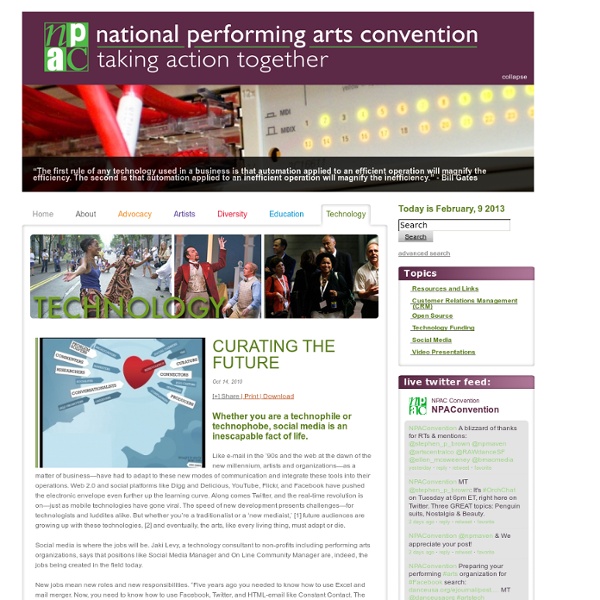Can 'Curation' Save Media?
The Curation Buzz... And PearlTrees
Posted by Tom Foremski - April 12, 2010 My buddy Dave Galbraith is the first person I remember to first start talking about curation and the Internet, several years ago. He even named his company Curations, and created a tool/site for curation: Wists. And his site SmashingTelly - is great example of curation, a hand-picked collection of great videos. Today, much is written about curation and the Internet but it all seems mostly talk because we don't really have the tools we need. Robert Scoble writes about The Seven Needs of Real-Time Curators "... who does curation? Reading Robert Scoble's post on curation, it almost seemed as if he were describing PearlTrees, a company I've recently been working with in an advisory role, when he talks about "info atoms and molecules." ...what are info atoms? PearlTrees is very similar, it's a curation tool that uses "pearls" as a visual metaphor for a web site, a Twitter post, an image, or a video. More to come... Tweet this story Follow @tomforemski
Le Guide de la Curation (1) - Les concepts
01net le 14/03/11 à 16h00 Etymologie La pratique qui consiste à sélectionner, éditorialiser et partager du contenu a été baptisée par les Américains curation ou Content Curation, par analogie avec la mission du curator, le commissaire d’exposition chargé de sélectionner des œuvres d’art et de les mettre en valeur pour une exposition. Les termes curation et curator prennent leurs racines étymologiques dans le latin cura, le soin. Le terme curation est apparu en France fin 2010. Historique La curation est la convergence des deux principales activités sur internet : la recherche et le partage. Elle est indissociable de la culture du partage, dont elle est l’héritière. Parallèlement, le volume d’informations n’a cessé de croître. Les internautes ont commencé à trier, à sélectionner les contenus qu’ils jugent intéressants pour les partager avec leurs amis ou leur réseau, créant ainsi une forme d’intelligence collective. Tout un écosystème se crée alors pour satisfaire la demande. Définitions
Nine Content Curator Tools for Social Media
If you attended Les Affaires’ social media conference, “Les Reseaux Sociaux Pour Une Implantation Concrete, Mesurable et Efficace” and did not have the opportunity to sit in on the seminar, “Contexte de B2B: Batissez Votre Strategie Afin D’Optimiser Votre Utilsation Des Reseaux Sociaux” then you missed out on some of the tools that will make a big difference in your strategic approach to social media. Do not worry. Like a good content curator, Intelegia is all about sharing relevant and timely information. The seminar touched upon 15 elements which are needed to build your presence on social networks for business-to-business initiatives. One element was how to gather information to provide relevant content for your target audience in order to build or enhance your brand. Below are the nine tools that were discussed in the seminar. 1. Addictomatic To read a complete review of this tool, read, “Real Time Searching With Addictomatic” Addictomatic is available at www.addictomatic.com 2. 3. 4. 5.
The Content Strategist as Digital Curato
The term “curate” is the interactive world’s new buzzword. During content creation and governance discussions, client pitches and creative brainstorms, I’ve watched this word gain traction at almost warp speed. As a transplant from museums and libraries into interactive media, I can’t help but ask what is it about this word that deserves redefinition for the web? Article Continues Below Curation has a distinguished history in cultural institutions. For a long time, we’ve considered digital objects such as articles, slideshows, and video to be short-lived. Consider some examples: NYTimes.com Topics employs content managers who sift through The Times’ archive to create new meaning by grouping articles and resources that were filed away (or distributed to library databases). More commercially, NBC Universal’s video site Hulu takes videos sourced from multiple networks and then rearranges them into collections that give a new perspective to the collection as a whole. What’s the payoff?
Free Technology for Teachers
Personal Learning Environment - A Conceptual Study



